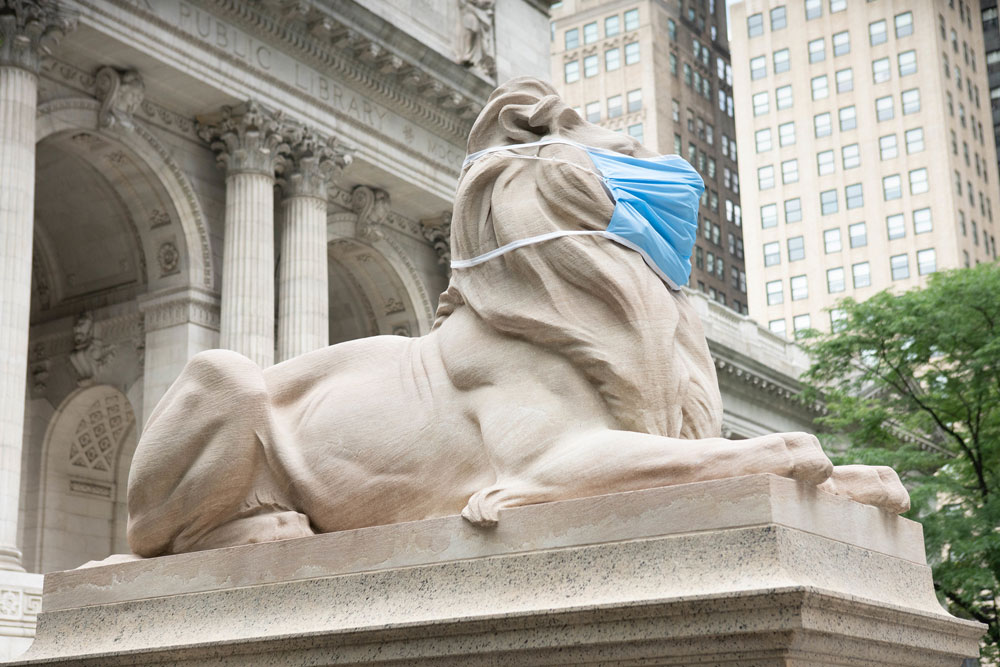
June 11, 2020; USA Today and NPR
Schools aren’t the only public institutions locked in debate over the need to reopen amid skyrocketing coronavirus infections nationwide. Libraries are facing the same dilemma.
Library services are more critical than ever as COVID-19 continues affecting communities across the US. Yet as library systems eye reopening to the public, the surge of new coronavirus cases in most states could keep doors closed for months to come.
The urgency to reopen is understandable. Summer is already a popular season with library patrons, and programs are often designed with vacationing students and job seekers in mind. With all schools shut since early April and tens of millions of unemployed in need of assistance, the types of social service provision unique to libraries is in even greater demand.
Urban Libraries Council’s Susan Benton summarized the central role libraries play in society by likening them to health care providers at the front lines of the public health crisis, stating that “public libraries are the first responders on the recovery.”
Tony Marx, president and CEO of the New York Public Library, elaborated further. “Libraries are the most visited civic institution in the country,” he tells USA Today. “And that’s because everyone uses the library. You know, whether you’re black or white, whether you’re red or blue, whether you’re rich or poor.”
Since large-scale shutdowns of public spaces began in March, libraries have adapted service delivery and illustrated their role as responsive havens by deploying robust digital e-book, audio, and webinar offerings; expanding Wi-Fi capabilities and using mobile hot spots for free public use; and, in the case of St. Louis County Library, providing outreach and engagement through free drive-thru meal, diaper, feminine products, and book deliveries. Children’s storytimes have shifted to online livestreams and webinars shoulder community programming. Some systems have implemented information hotlines and day shelters.
Sign up for our free newsletters
Subscribe to NPQ's newsletters to have our top stories delivered directly to your inbox.
By signing up, you agree to our privacy policy and terms of use, and to receive messages from NPQ and our partners.
The changes are proving popular: In New York, Marx notes a 200 percent increase in new e-book readers and a whopping 864 percent increase in online library card requests. Weekly library e-book lending has increased by nearly 50 percent nationwide since March.
Yet, with a sharp digital divide separating the Internet and its online resources from those populations who need it most, libraries know current delivery strategies are short-term solutions. Thus, conversations have turned to phased reopening plans as states struggle to regain control over COVID-19.
Thirty-seven percent of American Library Association survey respondents expected reopening to begin in June or July. Cities like Phoenix and Denver have already started curbside services with minimal-to-no contact. Limited in-person visits will likely follow, much like what Chicago Public Library is doing with its recently reopened branches. A third phase could be full access to facilities by larger numbers of patrons. Frequent cleaning and required masking for both staff and the public would remain in place as long as the risk of infection continues.
Regardless of approach, a clear plan for moving forward is paramount. And that’s not something library staff in New Orleans—one of the early epicenters of the virus—is sure they have as the system moves forward with reopening. Staff were back at work in early June but, as library associate Erin Wilson told USA Today, no clear guidance was given on how front-line workers should safely manage the reopening process. That matters because despite a resurgence in infections, New Orleans Public Library is allowing 45-minute in-person library sessions by reservation.
The question of whether to reopen or not, and how to do so safely, isn’t unique to libraries. Indeed, America itself seems to be struggling with the seriousness of its global role as the most infected country with the highest death rate. But the importance of the library as a stalwart support system for the communities it serves cannot be understated: U.S. citizenship classes for immigrants under constant attack; employment resources during a new recession; literacy programs for kids in an inequitable education system; shelter and restrooms for the unsheltered; and so on.
We’re seeing what a response that favored the economy over public health and a lack of centralized guidance during a crisis has wrought in the South and West. Careful reopening planning in the age of COVID-19 must prioritize the health, safety, and well-being of communities over haste, and libraries will play a big part in determining how best to achieve that goal. (Without pressure from Trump, at least for now.)
In the meantime, we can utilize the resources available to support our local libraries as they do their best to serve our communities and meet the needs of a rapidly changing tomorrow.—Drew Adams












